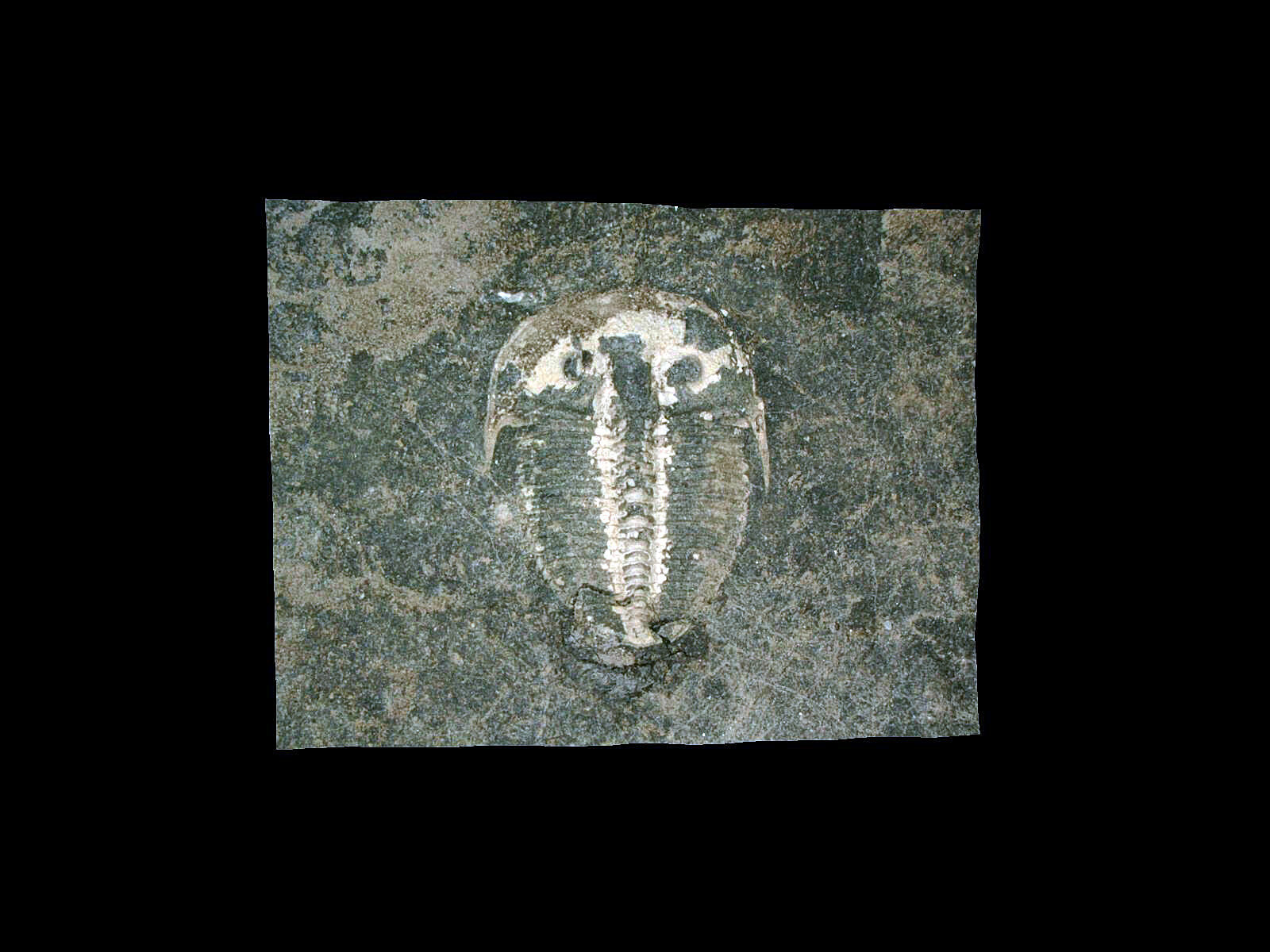

The trilobite Aulacopleura kionickii (Barrande, 1846), size: c 1cm. Credit: Brigitte Schoenemann.
A beautifully preserved 429 million-year-old eye of a marine creature that became extinct before dinosaurs even existed had vision similar to that of modern bees and dragonflies, researchers said Thursday.
Fossilized trilobites, formidable-looking arthropods with segmented bodies and sturdy exoskeletons are found all over the world.
The creatures crawled over ancient seabeds during the Paleozoic era, which came about 252 million years ago and ended during the ‘big star’, an extinction event that wiped out 95 percent of life on Earth.
The copy described in the journal Scientific reports is only one to two millimeters high and has two protruding semi-oval eyes on the back of the head, one of which is broken off.
Using digital microscopy, researchers from Germany and Britain found internal structures remarkably similar to those of the compound eyes of modern insects and crustaceans, which see through a honeycomb of small lenses each with a separate visual unit that has a small patch of light.
“In this small trilobite, the composite eye is almost the same as that of bees, dragonflies today, and many modern day (active) crabs,” said co-author Brigitte Schoenemann, of the Department of Zoology at the University of Cologne.

The trilobite Aulacopleura kionickii (Barrande, 1846), size: c 1cm. Credit: Brigitte Schoenemann.
“That this system seems to be very efficient, very old,” she told AFP.
While it was previously known that trilobites had these compound eyes, older specimens had “slit-shaped” eyes, “just scanned the corners” and no lenses on the visual units.
“In this trilobite, the view becomes wide, the eye also looks up in part,” she said.
Human eyes have a single lens and tens of millions of light-sensitive cells, which provide an advanced level of imaging.
Schoenemann said that in a composite eye, each visual unit works separately to produce a single pixel, “as in a computer graphic”.
The trilobite studied had exactly 200 of these, it gave a mosaic vision that could have enabled it to see “obstacles, hiding places”, and most importantly, predators such as the ancient kephalopod – distant ancestor of the nautilus and the octopus.

Fully assembled left eye of Aulacopleura kionickii (Barrande, 1846), outside, size c 1cm. Credit: Brigitte Schoenemann.
For comparison, she said the honey bee has several thousand of these “pixels”, while a dragonfly has up to 30,000 per eye.
“That the resolution differs, but not the functional principle.”
Because each of the lenses in the eye of the trilobite was small (35 micrometers in diameter), the researchers concluded that it lived in shallow, light-flooded waters, like certain present-day coastal crabs.
‘Breathable’
The trilobite was first discovered in 1846 near Lodenice, in the Czech Republic.
Schoenemann said the specimen was not otherwise unusual, suggesting that further study of existing fossils may reveal delicate structures that until recently were thought to have disappeared over time.
“I just liked this trilobite with its big head, and big eyes. But when I looked through the microscope, it was breathtaking what I saw,” she said.
-

Fully assembled right eye of Aulacopleura kionickii (Barrande, 1846), outside view, size c 1cm. Credit: Brigitte Schoenemann.
-

Outside display of the visual unit (Ommatidium), diameter c 35μm. Credit: Brigitte Schoenemann.
-

Modern transparent crayfish (Artemia salina (Linnaeus, 1758), size: c 1.5 cm). Credit: Brigitte Schoenemann.
“Not long ago, people still thought that in fossils only teeth, bones and such could be preserved, but never cellular structures. This has obviously changed.”
Trilobites first appeared during the so-called Cambrian Explosion – a rise in biodiversity more than half a billion years ago – and they populated the oceans some 250 million years ago.
Dinosaurs formed later and survived about 180 million years.
Compound eyes are a continuous function of evolution
Insight into a 429 million year old composite eye, Scientific reports (2020). DOI: 10.1038 / s41598-020-69219-0, www.nature.com/articles/s41598-020-69219-0
© 2020 AFP
Citation: Fossilized 429-mln-year-old eye mirrors modern insect vision (2020 13 August) retrieved 14 August 2020 from https://phys.org/news/2020-08-million-year-old-eye-view-trilobite-life. html
This document is subject to copyright. Except for any fair treatment for the purpose of private study or research, no part may be reproduced without the written permission. The content is provided for informational purposes only.